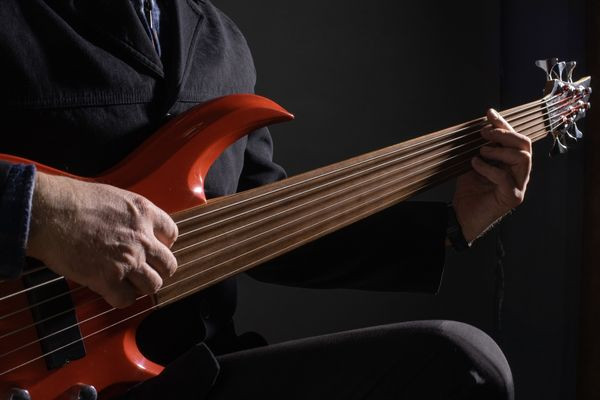 musician playing six string bass guitar
musician playing six string bass guitar
For bass players seeking to expand their sonic palette and technical capabilities, the Six String Electric Guitar presents a compelling evolution from the traditional four-string model. While rooted in the foundational principles of the electric bass – inheriting string names, range concepts, and intervallic relationships from its upright ancestor – the six string bass offers a broadened spectrum of musical expression, moving beyond solely rhythmic roles into more melodic territories.
What Exactly is a Six String Electric Guitar?
At its core, a six string electric guitar, often referred to simply as a six-string bass, is an electric bass guitar augmented with two additional strings. These extra strings are tuned to a low B (below the standard low E) and a high C (above the standard G string). This addition fundamentally expands the instrument’s range in both directions, providing bassists with notes that are both deeper and higher than those available on a standard four-string bass.
This expanded range isn’t just about hitting more notes; it dramatically changes the instrument’s melodic possibilities and chordal voicings. The extended range minimizes the need for extensive fretboard navigation to reach specific notes, making complex passages and chord shapes more accessible. While the six-string bass gained traction in the 1970s and 80s as keyboard instruments began to take on more rhythmic roles in genres like rock and New Wave, its appeal today lies in empowering bassists to explore more melodic playing styles and execute intricate solos.
It’s crucial to differentiate the six string electric guitar from the Bass VI. Although both feature six strings, the Bass VI is tuned like a guitar (E-A-D-G-B-e) but an octave lower, occupying a sonic space distinct from both standard guitars and basses. Similarly, the baritone guitar, while also tuned lower than a standard guitar, is not the same as a Bass VI or a six string electric bass.
Technique and Playability Considerations
Transitioning to a six string electric guitar requires adjustments in technique. The most immediate difference players notice is the narrower string spacing on a wider, thicker neck. This can initially feel cramped for those accustomed to the wider spacing of a four-string bass. New players may find themselves inadvertently muting adjacent strings or needing to refine their picking or fingerstyle techniques to maintain clarity.
However, once this adjustment period is overcome, the tighter string spacing offers advantages, particularly for melodic playing. Notes become readily accessible for chord formations, and the overall sonic texture when playing chords tends to be less muddy compared to a four-string bass attempting similar voicings in its lower register. Prospective six-string players are encouraged to try different models to find a neck profile and string spacing that suits their individual playing style and hand comfort.
The Benefit of Greater Sonic Range
The addition of the low B and high C strings unlocks several key advantages for bass players:
- Enhanced Chord Voicing: The expanded range allows for richer, more open chord voicings. The low B string provides a solid foundation while the high C string enables brighter, higher notes within the chord, resulting in more harmonically complete and resonant combinations.
- Access to Lower Frequencies: For musical styles demanding deeper bass frequencies, the low B string eliminates the need to detune a four-string bass. It provides immediate access to these lower notes while still maintaining the higher register.
- Melodic Versatility: While four-string basses excel in rhythmic and groove-oriented playing, the six string electric guitar elevates the bass into a more prominent melodic instrument. The high C string allows melodic lines to soar and provides access to higher registers without constantly shifting up the fretboard, offering a unique and richer tone compared to a standard guitar in similar melodic contexts.
Exploring Chordal Possibilities
While chord playing on a four-string bass can sometimes sound constricted due to its limited range and lower register focus, the six string electric guitar opens up a wider palette for chordal exploration. The low B and high C strings extend the instrument’s voicing capabilities, resulting in more defined and harmonically interesting chord progressions.
It’s important to note that the six string electric guitar is not intended to replicate a guitar’s chordal role. Instead, it bridges the gap between rhythm and melody, offering bassists a unique space to explore chordal textures within the bass frequency range. Conversely, the Bass VI is designed to function more like a lower-pitched guitar, emphasizing chordal playing in a deeper register.
Ready to delve into the world of bass? Explore our selection of electric basses at DuBaldo Music Center and consider signing up for bass lessons to accelerate your learning journey! Contact us today for more information.
